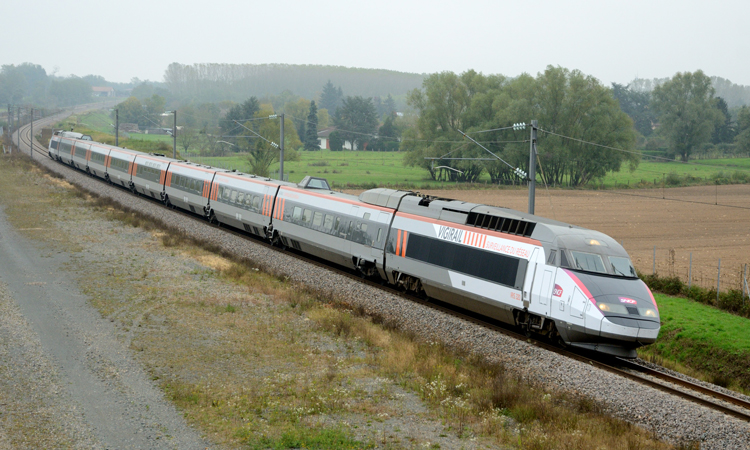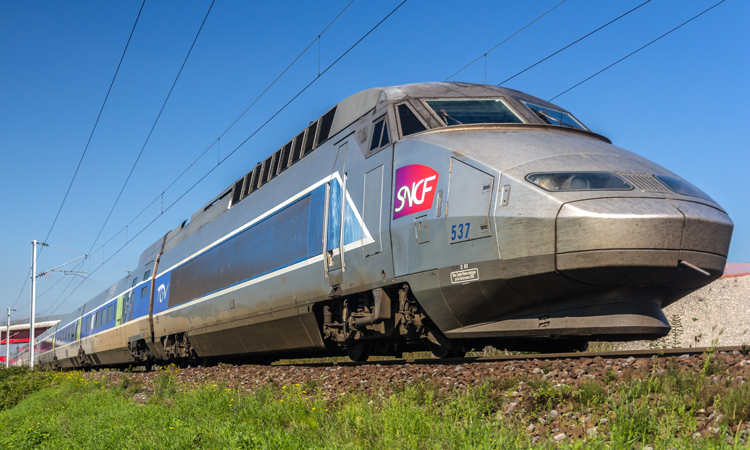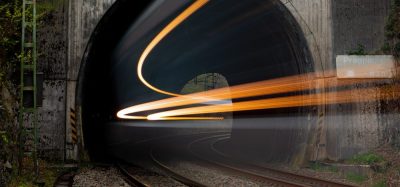French high-speed line development and network modernisation – the challenge to come
Posted: 5 May 2015 | Christian Schang - SNCF Réseau | No comments yet
On 1 January 2015, the French government decided to merge Réseau Ferré de France (RFF) and SNCF Infra creating SNCF Réseau. The change was necessary to increase the speed and process of decision-making within the organisation. The demand on sustainable transport is continuously increasing so it is necessary to place more trains on the French network, to optimise the operational management and at the same time respond to an increase in rolling stock and infrastructure maintenance linked to the fact that more trains will be in operation. But what does the new organisation mean for high-speed lines in France? Christian Schang, Project Director in the Engineering and Projects Division of SNCF Réseau takes a look.


Credit: Ignis (Own Work) via Wikimedia Commons
The new organisation allows for efficient project management of maintenance works, upgrading projects and the design, build, testing and commissioning, plus putting into service of four high-speed lines. It is a big challenge; the first time in the world that four high-speed lines will be delivered roughly in the same time frame. Today we are on time, but all the teams, private partners and SNCF Réseau will have two difficult years ahead to achieve them. And, not to forget, that around these huge projects, the network is about to be upgraded too. The question of allocation of resources, (human, material, rolling stock, plus the testing and measurement of rolling stock) is the most critical during these phases of the projects.
SNCF Réseau has three very important challenges to face:
Challenge 1: the organisation put in place to achieve the targets
It is relevant to mention that modifying an organisation at the time of substantial railway network modifications is surely thrilling, but also very time-consuming and difficult to accomplish.
Ex-RFF and ex-SNCF Infra teams have worked together since the beginning of 2014 to prepare for the future, even though at that time they weren’t aware of what the government’s final decision would be.
To create the region project entities including the Ile de France Region (more than €1 billion investments per year) and the central project management division were the most important organisational changes since 1997.
For the construction of high-speed lines, a special board was put in place to manage the projects (from construction to delivery) in cooperation with regional engineering teams.
Directors were given the lead on an item across the SNCF Group, enabling them to manage all aspects of the delivery.
This newly-developed organisation is expected to be fully in place in less than six months. We will then have the duty to increase its efficiency to decrease the cost of the projects and to enhance asset management.
Challenge 2: modernisation of the network
The increase of, and need for, more traffic has resulted in the decision to upgrade the whole network. It must be said before speaking of high-speed lines that the modernisation of the network needs many field resources, and to ignore this point could bring us to a dead-end.
During 2014, SNCF Infra and RFF worked together to define the management plan of the modernisation of 25 main lines including the high-speed lines in operation today. Simultaneously, counties and regions worked to define their regional transport projects. SNCF Réseau will manage all of these projects, for each region, once the projects are known. Some of them will be in connection with the high-speed lines in construction. Local and national teams are on-board to implement these huge modernisation and upgrading activities for approximately €3-4 billion per year.
Challenge 3: finalise the realisation, homologation, plus testing and commissioning and putting into service of four high-speed lines in less than two years
The first of the four lines to be put into service in March 2016 is the second phase of the East-European high-speed line. From Beaudrecourt to Vendenheim, this project brings Strasbourg to within less than two hours from Paris. We are currently on time to meet this project.
The following three high-speed lines are Public-Private Partnerships (PPPs). It is the first time that a PPP has been used in France for a railway project; the characteristic is that each project has the main line managed by the private partner and all the connections to the network are managed by SNCF Réseau. At the same time, SNCF Réseau is the client within the PPP. The issues are very important, technical, economic and social. The teams will work together closely in respect to the contracts but with the same aim to achieve the targets and to deliver these projects.
HSL South Europe Atlantic (SEA)
This is a high-speed line from Tours to Bordeaux that will bring Bordeaux within two hours reach of Paris. This is planned to be put into service in July 2017. It will be a 302km-long double-track with 10 junctions, plus equipped with ERTMS Level 2 for speeds of 320km/h.
HSL Brittany–Pays de Loire (BPL)
In prolongation of the HSL Paris–Le Mans, this double-track high-speed line will have a length of about 182km, with 32km of junctions to the network. The running speed will be 320km/h (design speed 350km/h). As with the SEA HSL, BPL will be put into service in July 2017.
HSL Contournement Nimes–Montpellier
The 80km-long high-speed line between Nimes and Montpellier will be a freight and passenger line. Design speeds are at 350km/h, with operational speeds at 220km/h for passenger trains and 120km/h for freight trains.


The French railway network includes approximately 30,000km of lines
Conclusion
The creation and new organisation of SNCF Réseau means that it is now possible to increase the efficiency of the modernisation of a huge network, including the development of a high-speed network.
A railway system is a complex matter. To enable it to be relevant and efficient, the infrastructure manager must be able to manage all the aspects of the system: the infrastructure, the rolling stock, the ability to operate the system and the ability to maintain it in respect to European rules.
After the four high-speed lines are put into service by the end of 2017, the question will arise as how to continue developing in the long-run. I think that the interoperability and development of the European high-speed network will lead to the next investment in high-speed lines in Europe, even if we still notice more development of conventional lines across Europe. As you will see, the fact that London is approximately two hours from Paris strengthens the creation of HS2 in Great Britain. Putting the northern towns of England and Scotland at a short journey reach from London brings these towns closer to Paris, Brussels and more or less to southern Europe. To join Rome to Barcelona, we will need the high-speed line in Italy, in France (LGV PACA on project today), and increasing the speed on Montpellier–Perpignan.
Creating a safe and reliable railway network with a combination of both conventional rail and high-speed lines is surely the aim of each railway company in Europe. It is most important to work closely on both line types in order to assure regional, national and international traffic of a sustainable transport system.
The realisation and management of four high-speed lines within the same time frame by the French industry and the SNCF Group is a unique experience.
There are two years still to go during which all the participants will work hard to achieve the wonderful target of creating a high-speed line network in the centre of Europe linking the north to the south.
IRIS 320 is the perfect solution to supervise a dedicated high-speed network
One main concern in monitoring the railway network is the integration of operations such as the need to access the network to analyse track geometry measurements and acceleration measurements, catenary dynamics and the detection of electrical arks, analysis of the power frequency shape, plus signalling.
SNCF created a high-speed train based on the classical TGV which can run at speeds of 320km/h and make infrastructure analyses. The train is equipped with a full podometric system to assure the localisation of the measurements; crucial when there is a dedicated high-speed network. The high-speed measurement train can be integrated into the operational timetable. SNCF chooses to analyse its lines every two weeks. This enables us to provide continuous information to the field units as to the state of the network. The planning of works on the lines, and the evolution of the points to be followed more closely are eased, and the impact on operation near to zero (sometimes lowering the speed a little bit).
The new infrastructure manager: SNCF Réseau
The merging of the former infrastructure manager, RFF, and SNCF Infra, the former delegate infrastructure manager, took place on 1 January 2015 and SNCF Réseau was born. The organisation’s evolution gave the opportunity to redefine all of the components and roles needed to manage the French railway network of about 30,000km of lines. The following four divisions were created:
Access to the Network
This division manages the allocation of slots to the operation companies. It optimises the availability of the network to maximise train operations. This division assures the pricing and commercialisation of the infrastructure manager’s services. It also manages the relation between the infrastructure manager with the State, the European Commission and other European networks.
Maintenance and Works
Including asset management, this division manages, develops and modernises the French national railway network in the maintenance and field works. It also assures the safety, security and the regularity.
Operation Management
This division fixes the train operational programmes to ensure an efficient management in safety of all the traffic and works management. It manages the regularity of train operation.
Engineering and Projects
This is the division managing the projects on the network including those concerning the main high-speed lines and is responsible for the entire project management. It assures the management with the industry due to the development of the systems and components. It represents the expertise of the SNCF Group in the field of systems and components. It develops the human resources in project management on a high level for the SNCF Group.
Biography


Stay Connected with Global Railway Review — Subscribe for Free!
Get exclusive access to the latest rail industry insights from Global Railway Review — all tailored to your interests.
✅ Expert-Led Webinars – Gain insights from global industry leaders
✅ Weekly News & Reports – Rail project updates, thought leadership, and exclusive interviews
✅ Partner Innovations – Discover cutting-edge rail technologies
✅ Print/Digital Magazine – Enjoy two in-depth issues per year, packed with expert content
Choose the updates that matter most to you. Sign up now to stay informed, inspired, and connected — all for free!
Thank you for being part of our community. Let’s keep shaping the future of rail together!







